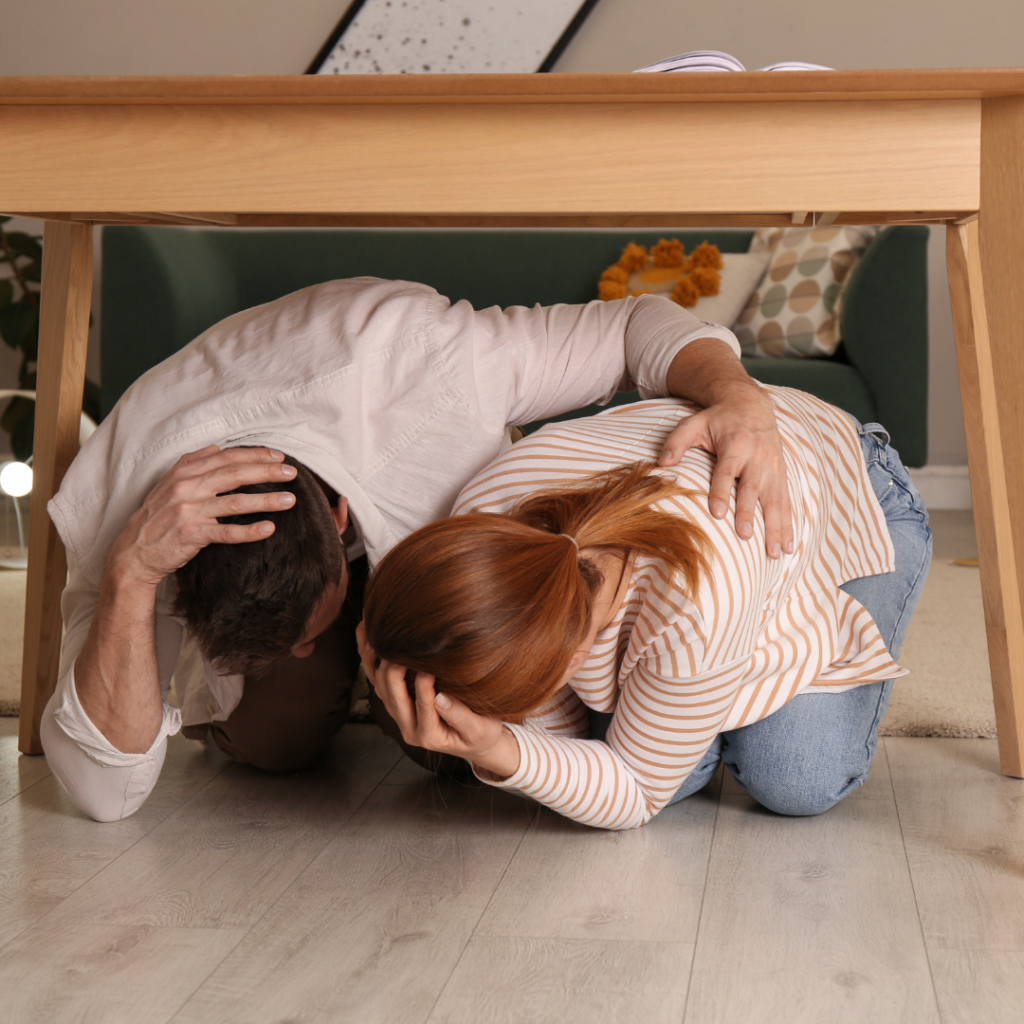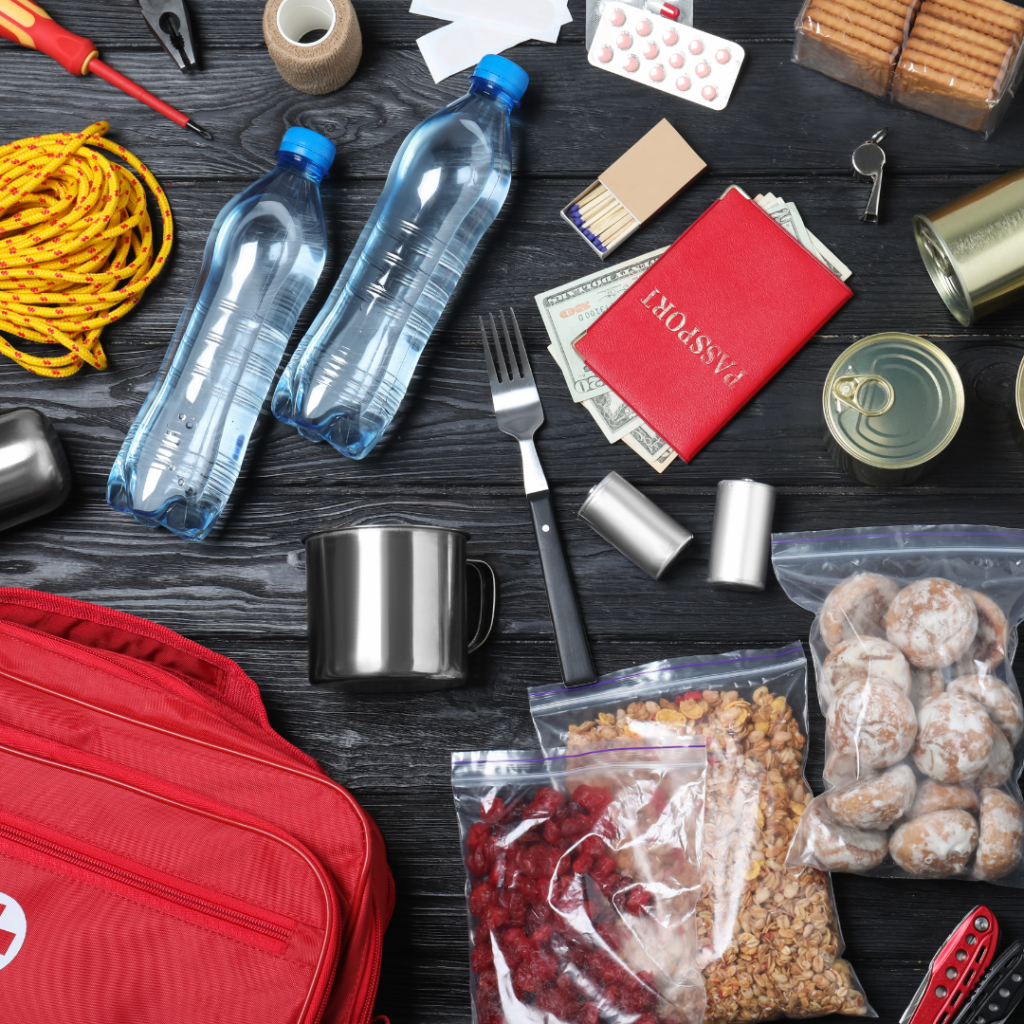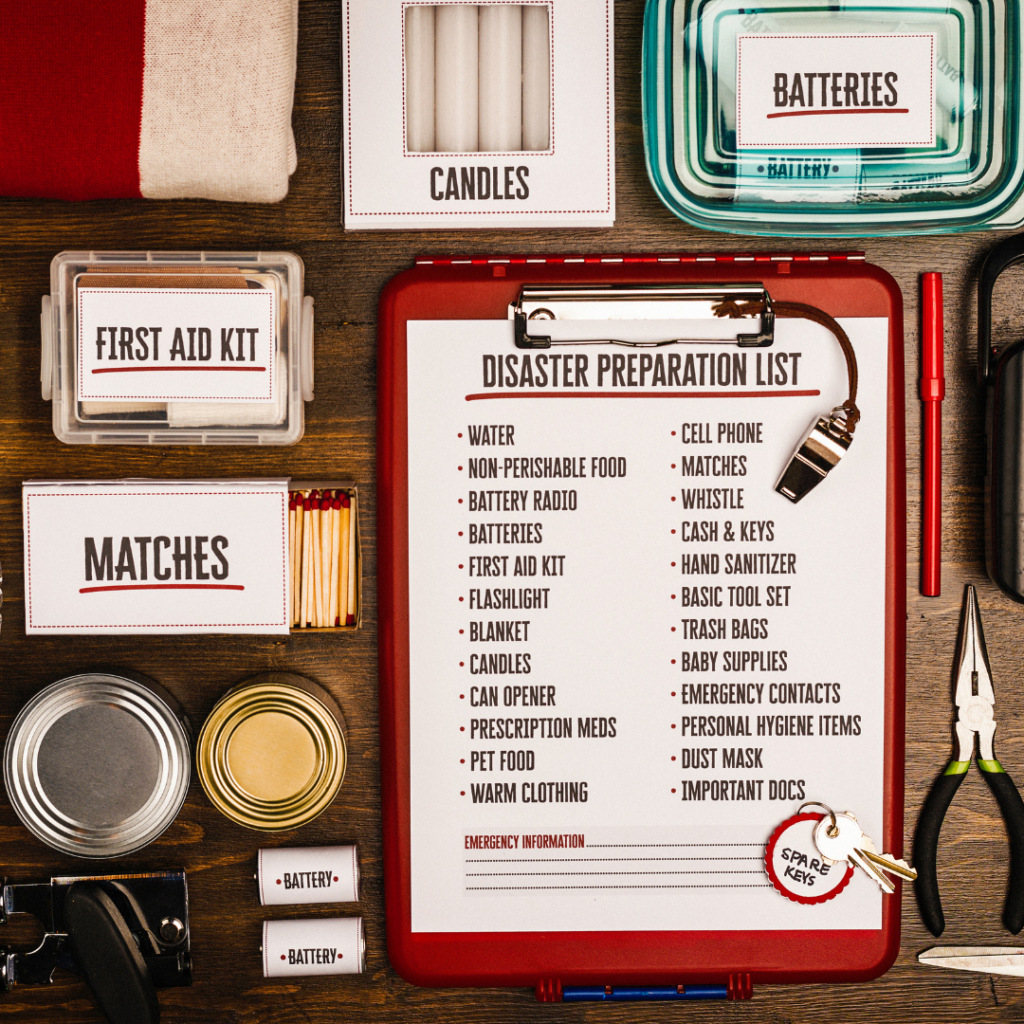
Are you prepared for an earthquake? Whether you live in an earthquake-prone area or not, taking steps to prepare your home for potential seismic activity can make a significant difference in protecting your family and property. According to the Federal Emergency Management Agency, around 45 states and territories in the United States are at moderate to very high risk of earthquakes, underlining the importance of earthquake preparedness. In this blog post, you will discover 10 essential tips to ensure your home is equipped to handle an earthquake and its potential aftermath, keeping your loved ones and belongings safe. From securing heavy furniture to creating an emergency plan, these tips will empower you to minimize the impact of an earthquake on your household.
When preparing your home for an earthquake, it’s crucial to secure heavy furniture and appliances to prevent them from toppling over and causing harm or damage. Here are essential tips to ensure the safety of your household items.
Anchoring bookcases and cabinets can prevent them from falling over during an earthquake. Use L-brackets to secure these items to the wall studs. Place the brackets at the top and bottom of the furniture, ensuring a strong connection to the wall. Additionally, clear heavy items from high shelves to minimize the risk of toppling.
Water heaters and large appliances can pose a significant danger if not properly secured. Use earthquake-resistant straps to secure water heaters to nearby walls. For large appliances such as refrigerators and stoves, install safety straps or brackets to prevent them from shifting or falling during seismic activity.
Taking these precautionary measures will help minimize the hazards posed by heavy furniture and appliances during an earthquake, ensuring the safety of your household and loved ones.
For more information on securing furniture and appliances, visit the Federal Emergency Management Agency’s guide for earthquake readiness.

In the event of an earthquake, having a well-thought-out family emergency plan is crucial for ensuring the safety and well-being of your loved ones. Establishing meeting points and identifying emergency contacts are pivotal components of this plan.
Select primary and secondary meeting points that are easily accessible from your home, such as a nearby park, school, or community center. Ensure that all family members are familiar with these locations and understand the importance of heading to these designated meeting points in the event of an earthquake. Consistently practice going to these meeting points as part of your emergency preparedness drills to reinforce familiarity.
Compile a list of emergency contacts, including local relatives, trusted neighbors, and out-of-town connections. Ensure each family member has a physical copy of these contacts, and also store them in digital format on their phones or personal devices. Clearly outline the roles of each emergency contact and establish a communication plan, designating specific individuals to reach out to for different types of assistance.
Remember, a family emergency plan is only effective if all members are well-informed and actively participate in practicing and understanding the procedures. Taking the time to create and consistently review the plan will greatly enhance the level of preparedness and safety for everyone involved.
For additional insights on emergency preparedness, you can refer to the Federal Emergency Management Agency’s (FEMA) website for comprehensive resources and guidance.

When preparing for an earthquake, building an emergency kit is essential for ensuring the safety and well-being of your household. An earthquake emergency kit should include provisions to sustain you and your family for at least 72 hours.
In your emergency kit, include a three-day supply of non-perishable food such as canned goods, energy bars, and dried fruits. Ensure you have a manual can opener for canned food. Additionally, store at least one gallon of water per person per day for drinking and sanitation purposes. Don’t forget to include any necessary prescription medications, as well as a basic supply of over-the-counter medications such as pain relievers, antacids, and allergy medication.
Your emergency kit should also contain a well-stocked first aid kit with supplies to address minor injuries and medical needs. It should include adhesive bandages, sterile gauze pads, adhesive tape, tweezers, scissors, antiseptic wipes, and a thermometer. Personal hygiene items such as moist towelettes, hand sanitizer, soap, toothbrushes, and toothpaste are crucial to maintain cleanliness and prevent the spread of germs in an emergency situation.
By regularly checking and maintaining your emergency kit, you can ensure that your supplies are up to date and your family is well-prepared for any potential earthquake or disaster.
Remember, being prepared can make a significant difference in how you and your family cope during and after a seismic event.
When preparing your home for an earthquake, one crucial aspect is reinforcing the structure to withstand the shaking and potential impact. Here are essential steps you can take to reinforce your home’s structure:
Bolting your home’s foundation involves securing the wooden frame of the house to its concrete foundation. This process helps prevent the house from sliding off its foundation during an earthquake. By adding anchor bolts and steel plates to reinforce the connections between the wooden frame and the foundation, you can significantly enhance your home’s stability.
It’s essential to consult a professional contractor to assess the type of foundation your home has and determine the appropriate bolting methods. This reinforcement technique can greatly increase your home’s resistance to seismic forces.
Weak walls and roofs are vulnerable points during an earthquake, posing a significant risk of collapse or structural damage. Reinforcing these elements can mitigate potential hazards and enhance your home’s overall resilience.
Adding bracing to the walls and shear panels to the plywood on the exterior walls can provide crucial support. Additionally, securing heavy furniture and appliances to the walls can minimize the risk of these items toppling over and causing injury or blocking escape routes. Regular inspections to identify and repair weak spots in walls and roofs are essential for maintaining the structural integrity of your home.
Ensuring the resilience of your home’s structure is a fundamental step towards earthquake preparedness, providing greater safety for you and your family.
When preparing your home for an earthquake, it’s crucial to secure hazardous materials to minimize the risk of spills or leaks. This involves securing gas cylinders and chemicals and establishing safe storage areas.

Gas cylinders and chemicals should be securely fastened to prevent them from toppling over during an earthquake. Utilize straps, brackets, or racks specifically designed for anchoring these items. Additionally, ensure that all connections are tight and that valves are closed to prevent any potential leaks.
During seismic events, gas lines can rupture, leading to dangerous leaks and potential fires. Securing gas cylinders and chemicals can significantly reduce the risk of such hazards, protecting both your home and your family from harm. Always follow the manufacturer’s guidelines for securing gas cylinders and handling chemicals to ensure optimal safety.
Designate safe storage areas for hazardous materials within your home. Choose areas that are well-ventilated, away from direct sunlight, and inaccessible to children and pets. Consider installing sturdy cabinets or shelves that are anchored to the wall to store chemicals and other potentially harmful substances.
It’s essential to separate incompatible chemicals to prevent any adverse reactions in the event of a spill or leak. Clearly label all containers with the contents and their associated hazards to ensure safe handling and storage. By organizing and securing hazardous materials in designated storage areas, you can mitigate the risk of exposure and environmental contamination in the event of an earthquake.
Remember, proper storage and securing of hazardous materials not only reduce the risk of harm during an earthquake but also contribute to overall household safety. Taking these proactive measures can have a significant impact on minimizing potential hazards and ensuring a secure living environment.
Knowing how to shut off your home’s utilities is crucial for ensuring safety during and after an earthquake. In the event of a quake, it’s important to be able to quickly turn off the gas, electricity, and water to prevent potential hazards. Here’s a guide on how to shut off gas, electricity, and water in your home.
When it comes to shutting off the gas in your home, locate the main gas valve and turn it clockwise to close it. It’s essential to know the exact location of this valve and have the necessary tools readily available. Following an earthquake, only a qualified professional should turn the gas back on.
For the electrical system, locate the main circuit breaker or fuse box in your home. If there’s a risk of electrical sparks, turn off the electricity to prevent fires and other electrical hazards. Make sure all household members are familiar with the location and operation of the circuit breaker or fuse box.
Identify the main water shut-off valve in your home, typically located where the water line enters your property. Turn the valve clockwise to shut off the water supply. It’s beneficial to label this valve for quick identification in an emergency. Turning off the water can prevent flooding and water damage in the event of broken pipes or leaks caused by an earthquake.
Being familiar with these shut-off procedures can make a significant difference in minimizing potential damage and ensuring the safety of your household. Knowing how to shut off gas, electricity, and water is a proactive step in earthquake preparedness.
Remember, practice makes perfect. Regularly reviewing these steps with your household members can help ensure a quick and efficient response in the event of an earthquake.
For more information on earthquake preparation and safety, visit the Ready.gov website.
By taking proactive steps to learn how to shut off your home’s utilities, you can better prepare for potential earthquake-related emergencies.
Staying informed and educated about earthquake preparedness is crucial for ensuring the safety of your home and family. Understanding Earthquake Early Warning Systems and participating in Earthquake Preparedness Drills are essential components of this preparedness.

Earthquake Early Warning Systems are designed to detect the initial tremors of an earthquake and issue alerts before the more damaging seismic waves arrive. These systems provide valuable seconds to take protective actions. Familiarize yourself with the early warning systems available in your area and understand how to respond when an alert is issued. Here is more information on earthquake early warning systems.
Participating in earthquake preparedness drills is an effective way to practice and reinforce safety measures. It helps individuals and families understand the appropriate actions to take during an earthquake. Coordinate with local community organizations, schools, or workplaces to take part in scheduled earthquake drills. This proactive approach will better prepare you to respond swiftly and confidently in the event of an earthquake.
Remember, staying informed and educated empowers you to make sound decisions and take timely actions, ultimately enhancing your resilience in the face of earthquake risks.

It’s crucial to regularly review and practice your family emergency plan and safety procedures to ensure everyone is prepared. By doing so, you will instill a sense of readiness and confidence in the event of an earthquake. Here’s how you can effectively review and practice your plan:
Schedule routine drills to simulate earthquake scenarios. Practice the “Drop, Cover, and Hold On” technique and ensure that every family member knows how to react swiftly and safely.
Regularly update the contact information in your emergency plan. As phone numbers and addresses change, it’s essential to keep this information current. This can include emergency contacts, local authorities, and nearby shelters.
Check and refresh your emergency supply kit regularly. Ensure that food, water, medications, and other essentials are within their expiration dates and replenish items as needed.
Review and modify your family’s communication plan if necessary. Ensure that everyone knows whom to contact and where to meet in the event of an earthquake.
Inspect your home for safe zones and potential hazards. It’s essential to regularly evaluate and modify these areas as needed to ensure the safety of your family during an earthquake.
Remember, the key to preparedness is practice. By reviewing and practicing your plan regularly, you can be confident that you and your family are well-prepared for any earthquake eventuality.
Always be sure to stay informed and connected with reputable sources to ensure the safety of you and your loved ones.
In conclusion, preparing your home for an earthquake is crucial for your safety and that of your loved ones. By implementing the 10 essential tips outlined in this guide, you can significantly reduce the potential impact of an earthquake on your property and well-being. Remember, being proactive and taking the necessary precautions can make a substantial difference in the event of a natural disaster.